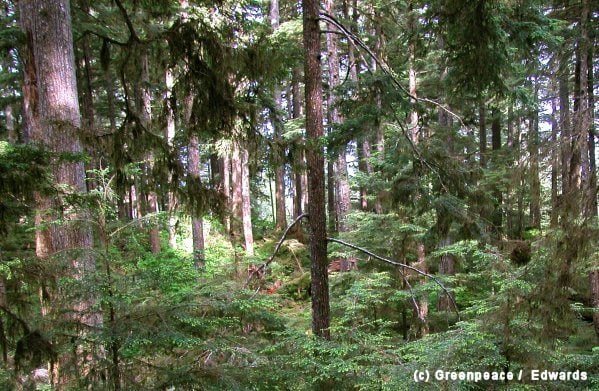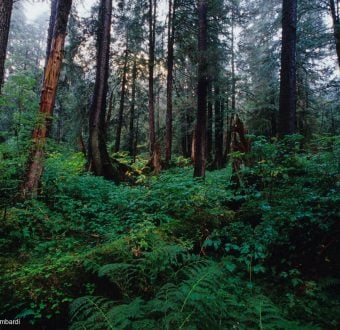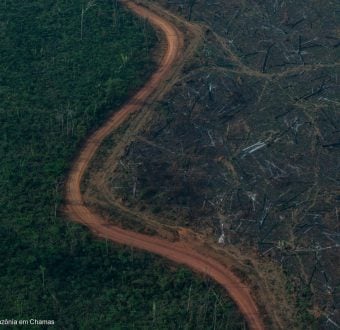Click to download this page as a pdf.
Logging on each U.S. national forest is governed by a Forest Plan, updated only every 10-15 years. In Alaska, the Forest Service is now amending its plan for the Tongass National Forest, and public comments are due by Monday, Feb. 22. The Tongass is a coastal temperate rainforest in the state’s southeastern panhandle. It home for Alexander Archipelago wolves, bears, salmon, eagles, and goshawks.
All of the alternatives being considered for the Forest Plan in its draft environmental impact statement (DEIS) are very poor, and they are quite similar in the respects that matter.
Please help us press the reset button on this plan, by taking a small bit of time to prepare original comments from the information below. Since “click-to-submit” form letter comments won’t count for much with the agency, your special effort is what is needed.
The documents out for comment are the DEIS and a draft forest plan, called the Tongass Land Management Plan (TLMP, pronounced “tea-lump”). The five alternatives in the DEIS would log between 370 million and 1.1 billion board feet of old-growth forest over the next four decades. That is a big addition to the cumulative loss of old-growth forest in the region, and old-growth is a non-renewable natural resource.
Since the 1950s, in Southeast Alaska nearly 900,000 acres of old-growth rainforest has already been lost to logging, across all forestland ownerships including the Tongass National Forest. Consequently, in 2010 the Forest Service announced it would “rapidly” transition out of old-growth logging on the Tongass. No progress has been made toward that to date, and with this DEIS and draft TLMP the agency has transparently reneged on its six-year-old foresight and promise. The problem is, the agency is hell-bent on keeping the unsustainable timber industry afloat, instead of helping the half-dozen very small affected communities to transition into a sustainable economy of a different sort, not reliant on logging.
Your comments will be most effective if you aim them at the agency’s stated “Purpose and Need” for the plan amendment, and for a kind of alternative that should have been considered, but wasn’t.
Main points to consider in doing this are:
1. End Old-Growth Logging, Now!
Part of the Purpose and Need for the Plan amendment is to determine which lands will be classified as “suitable” for timber production. All old-growth forestland should be declared “unsuitable,” and this needs to be included in an alternative that is considered in detail and which then forms the basis of the final plan. Also, say that the “projected timber sale quantity” (a term used in the stated Purpose and Need) should be zero for old-growth forest.
2. End Even Age Timber Management, Now!
The planned clearcutting of mature second growth will condemn the most biologically valuable watersheds of the Southeast Alaska to the status of tree (fiber) plantations, for the round-log export market. The places that were logged first on the Tongass, decades ago, were the high-productivity, low elevation forest stands, and the five DEIS alternatives would log them as soon as the second growth is marginally mature. That includes even the second growth that is within designated habitat reserves, riparian management areas, beach buffers and scenic viewsheds ¾ second growth that has until now been intended to eventually revert to an old-growth condition. The second-growth stands that would be cut during the next few decades are well-on into that healing process. For the most part, this process needs to continue to the completion of that natural restoration, and not be cut-off.
All the second growth that would be mature enough over the next 20-30 years would be vacuumed up, in attempting to support the existing industry while the rate of old-growth logging is squeezed down (but even so, just to the above-mentioned still unsustainable rate). Instead, the most reasonable approach is for just some of the smaller mills to survive, and be sustained from a small portion of the mature second growth that is within only the current “suitable” timberbase. After those 20-30 years – with a huge amount of second growth the reaching maturity yearly – a reconstituted industry may be reasonable (needing only a fraction of that flush of sizeable regrowth), if the generations living at that time desire it.
3. The Transition Needs to be About the Communities, Not the Timber Industry.
The alternatives in the DEIS are narrow-minded, with none looking at how to transition the half-dozen communities that have some reliance on logging into prospering on other economic endeavors. These endeavors can include outdoor work (e.g., recreation & tourism, forest road maintenance & decommissioning), Internet-enabled work, and entrepreneurial enterprises, etc. Only about 100 full-time equivalent timber industry jobs are involved – a doable transition the federal government can lead, for a truly sustainable future. In contrast, the timber economy promoted in the DEIS is unsustainable, even over the short-term.
4. The TLMP Planning Process Has Been Illegitimate — Get It on Track!
Six years after the Forest Service’s Alaska Regional Forester’s 2010 announcement of a “rapid” transition out of old-growth logging, we have instead: (1) the recently decided Big Thorne timber sale, by far the largest old-growth sale on the Tongass in over 20 years; (2) more large timber sales in the queue; and (3) a Proposed Alternative (Alt-5) in the DEIS that would log 600 million board feet from old-growth over the next 40 years, and 900 million board feet from old-growth over TLMP’s 100-year planning horizon, in addition to (4) all alternatives creaming nearly all the second growth on high-productivity forest lands over the next three decades, as soon as marginally mature, ending their return to an old-growth state.
This is unjust! In 2013 USDA Secretary Vilsack directed the preparation of the EIS and the TLMP Amendment. By his direction, the effort is narrowly focused on timber production, not the kind of open-minded transition this region really needs. To further his marching orders, the Forest Service hand-picked a formally designated Tongass Advisory Committee (TAC). The TAC members were unrepresentative of Southeast’s society and economy, and included very weak “conservationists.” It was set up to provide the Forest Service a patina of “social license” for the plan it wanted all along. The TAC’s recommendation is now the Proposed Alternative for the TLMP Amendment, contrary to much citizen testimony to the TAC that an “immediate” end to old-growth logging is sorely needed.
The Final EIS needs to include a new alternative that will accomplish that, and it needs to be adopted in the Plan. We need a wholly new approach to management of the Tongass for the 21st Century, not a throwback to the past century.
The deadline is: received by midnight, on Monday February 22
PLEASE EMAIL OR MAIL YOU COMMENTS TO:
[email protected]
Forest Supervisor, Tongass National Forest
Attn: Forest Plan Amendment
648 Mission Street
Ketchikan, AK 99901



